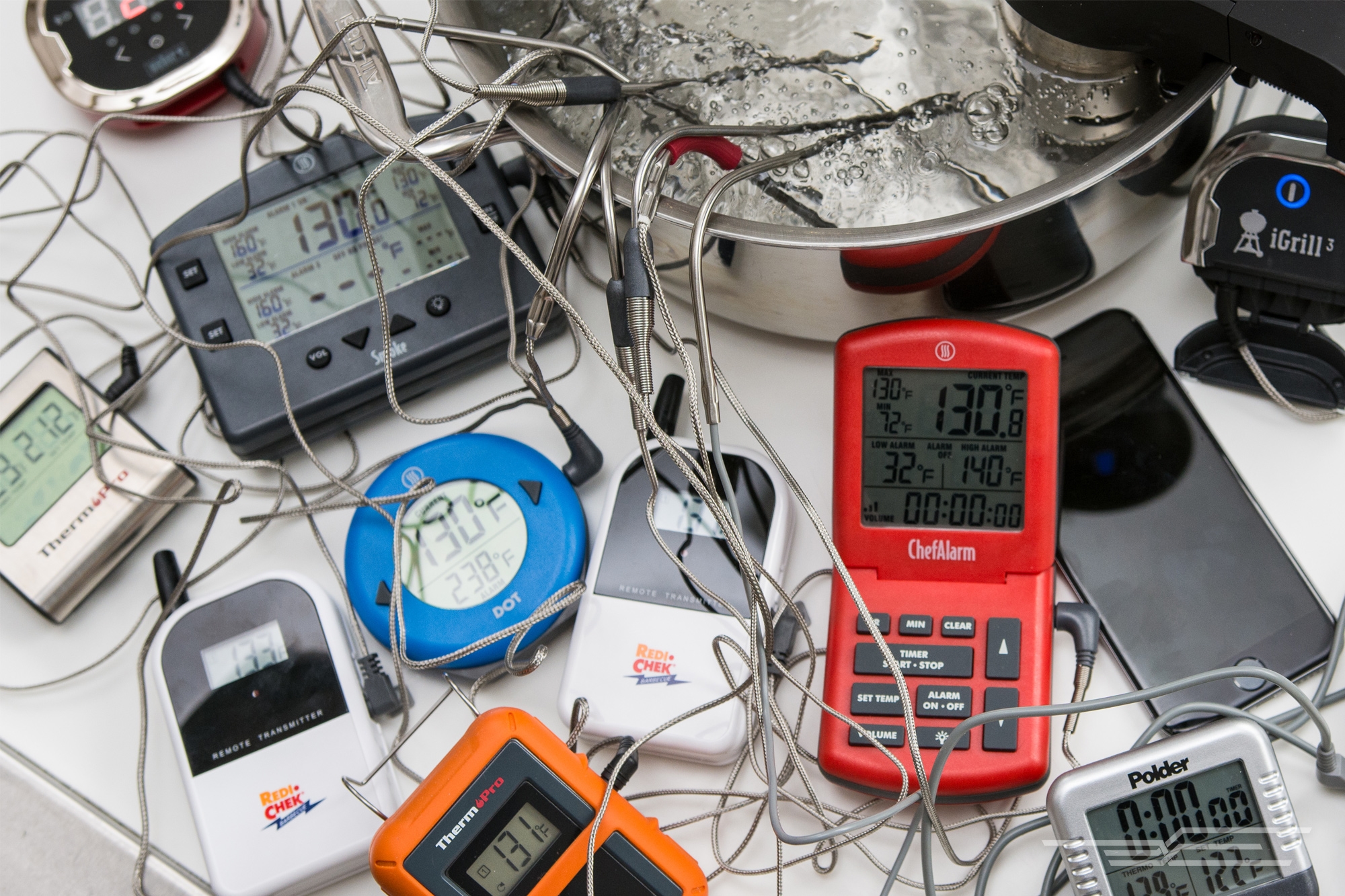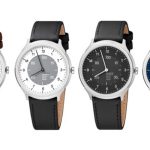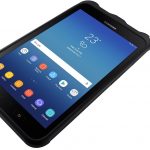The best probe thermometer
By Michael Sullivan
This post was done in partnership with The Sweethome, a buyer’s guide to the best homewares. When readers choose to buy The Sweethome’s independently chosen editorial picks, it may earn affiliate commissions that support its work. Read the full article here.
After spending 12 hours testing probe thermometers and speaking with experts—including cookbook authors, chefs, butchers, and a New York City Department of Health employee—we think most cooks just need a regular meat thermometer. But if you’re set on getting a probe thermometer to measure the temperature of food while it cooks, we recommend the ThermoWorks Dot. In our tests, the Dot was the fastest and most accurate at reading temperatures. Its simple design and straightforward controls made it easier to use than the competition.
How we picked and tested
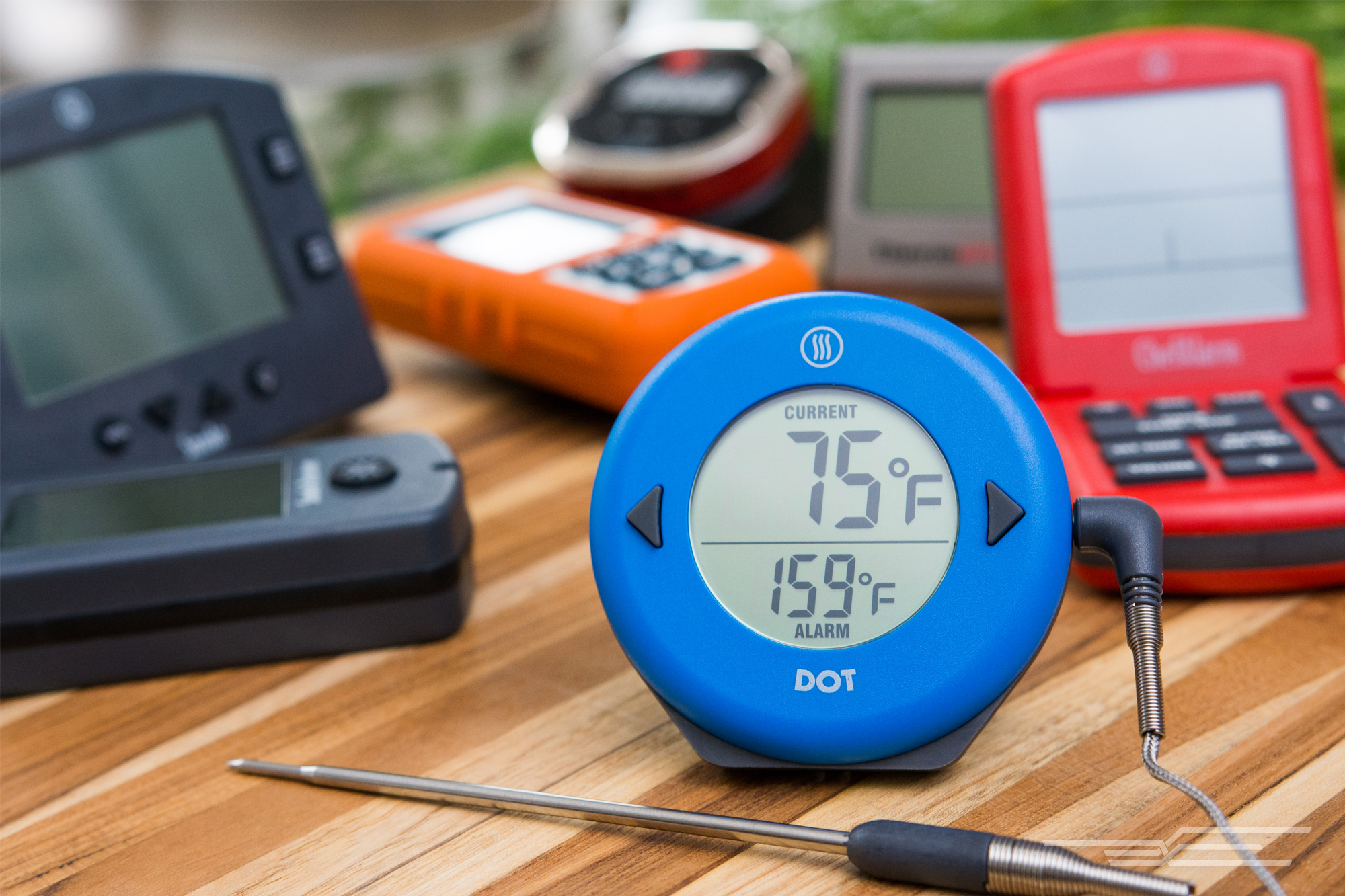
A good probe thermometer should quickly and accurately give a temperature reading so that you know when your food, particularly meat and poultry, is safe to eat. It should have a wide temperature range to accommodate both oven and grill use, and it should be intuitive to operate. Longer probes will ensure that you’re reaching the thickest part of large roasts, or the bottom of a saucepan for frying or for making candy.
For this guide, we tested 11 probe thermometers with temperature ranges between –58 ºF and 572 ºF and probe cables that can resist up to 712 ºF. We looked at three main types:
- Basic thermometers with a single probe that display readings on a digital unit
- Dual-channel thermometers that have two probes (one for taking the internal temperature of the meat and another for reading the ambient cooking temperature) and display readings on a digital unit
- Remote probe thermometers that display readings on battery-operated wireless receivers or through smartphone apps via Bluetooth
To check the accuracy of the thermometers, we inserted their probes into a ceramic mug filled with ice water (32 °F), which is what most manufacturers recommend for proper calibration. We also tested the probes in a pot of boiling water (212 °F) and in a stockpot of 130 °F water maintained by a sous vide circulator. We timed how long each thermometer took to register the correct temperatures.
To test the durability of the probe cables at high temperatures, we used our finalists in a screaming-hot, 650 °F to 700 °F grill. After our initial round of testing, we used the remaining contenders to monitor the temperature of oven-baked chicken pieces to get a feel for their usability.
We also evaluated the strength of the magnets on the back of the digital receivers to see how well they could stay attached to the side of an oven or grill, and measured the distance from which remote probe thermometers could function before losing their wireless connection.
Our pick: ThermoWorks Dot

We recommend the affordably priced ThermoWorks Dot probe thermometer for its impressive accuracy and ability to read temperatures quickly. Compared with the others we tested, it was the easiest thermometer to use, thanks to its simple, intuitive design and large digital display. The Dot’s wide temperature range makes it ideal for both oven and grill use, and its strong magnet kept it securely attached to the side of our oven. The Dot also had one of the longest cables—about 48 inches—of the models we tested, and its 4½-inch probe will have no problem reading the internal temperature of large roasts.
In our tests, the Dot was the fastest thermometer to read temperatures accurately. On average, it was able to read 32 °F in about 8.5 seconds and 212 °F in about 5.5 seconds. Its thermistor sensor has an impressively wide temperature range of –58 °F to 572 °F (and a cable that can withstand 700 °F for short periods). The Dot was one of only three tested models that were accurate to the degree in a stockpot of 130 °F water maintained by a sous vide circulator.
The ThermoWorks Dot doesn’t come with a metal clip that attaches the probe to the side of a saucepan for tasks such as frying or candy making, but all ThermoWorks accessories (including probe clips, grate clips, and air probes) are sold separately. It also comes with a two-year warranty, and the probe is replaceable. The Dot lacks a backlight and a timer, but with everything else the Dot has going for it, we didn’t feel these omissions were dealbreakers.
Also great: ThermoWorks ChefAlarm and Smoke
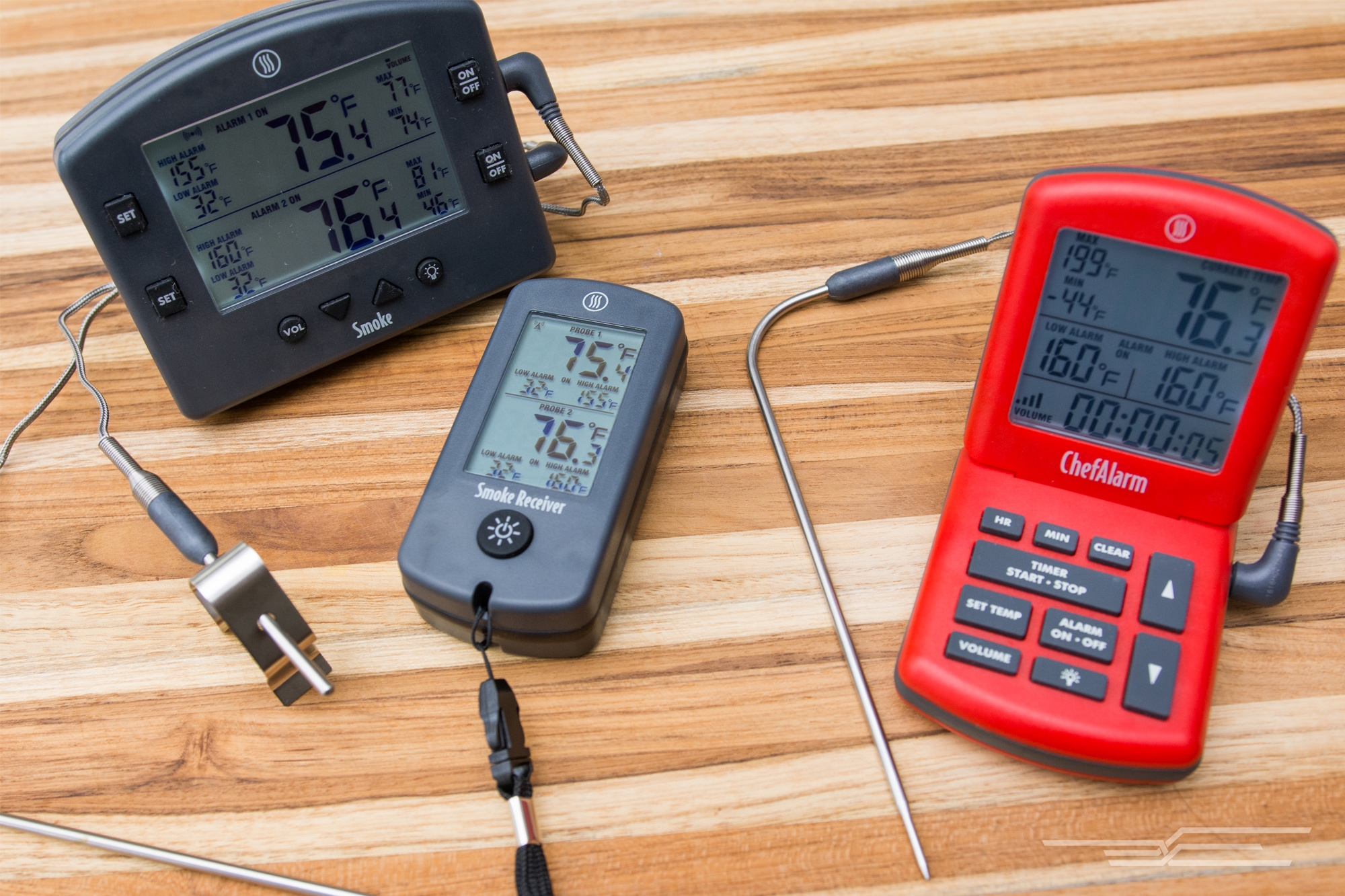
If you want more features, such as a backlit screen and volume adjustment, we recommend two other models by ThermoWorks, the ChefAlarm and the Smoke. Both thermometers were very accurate in our tests, and both have longer probes than our main pick, but we found that they were slightly slower at reading temperatures. They both offer the same impressive temperature range as the Dot, from –58 °F to 572 °F for the probe and up to 700 °F for the cable.
In our tests the ChefAlarm took a couple of seconds longer than the Dot to read temperatures, but it was just as accurate. The timer on this model is a nice addition (it can handle countdowns as long as 99 hours, 59 minutes), and the backlit screen is handy for outdoor grilling at night. The ChefAlarm also allows you to set the minimum and maximum temperatures, which have corresponding alarms to alert you when they’re reached. The two strong magnets on the back of the unit keep it in place when attached to the side of an oven or grill; the digital unit is also hinged, so you can lay it flat or adjust it to a specific angle. However, in spite of the ChefAlarm’s various benefits, we think most people will be fine with our pick.
Like the ChefAlarm, the Smoke has a backlit screen and volume control. But in contrast with our other picks, the Smoke can operate via a wireless receiver and has two channels to accommodate multiple probes: one probe to take the internal temperature of the meat, and an air probe for measuring the ambient temperature of the oven, grill, or smoker. The Smoke also allows you to set the minimum and maximum temperatures for each probe, which sound corresponding alarms when the set temperatures are reached. In our tests, the Smoke maintained its wireless connection for an unobstructed distance of 350 feet. We don’t think you need these features, but if you really want them, the Smoke was the best model we tested that offers them. Considering that this thermometer is also $60 more than the Dot, we think the Smoke makes sense only for grill and smoker enthusiasts.
Coincidentally, all of our picks are manufactured by ThermoWorks. They were far and away the best thermometers we tested. None of the other models compared with our picks in terms of speed, accuracy, and ease of use.
This guide may have been updated by The Sweethome. To see the current recommendation, please go here.
Note from The Sweethome: When readers choose to buy our independently chosen editorial picks, we may earn affiliate commissions that support our work.
(14)



